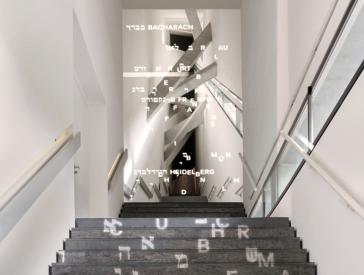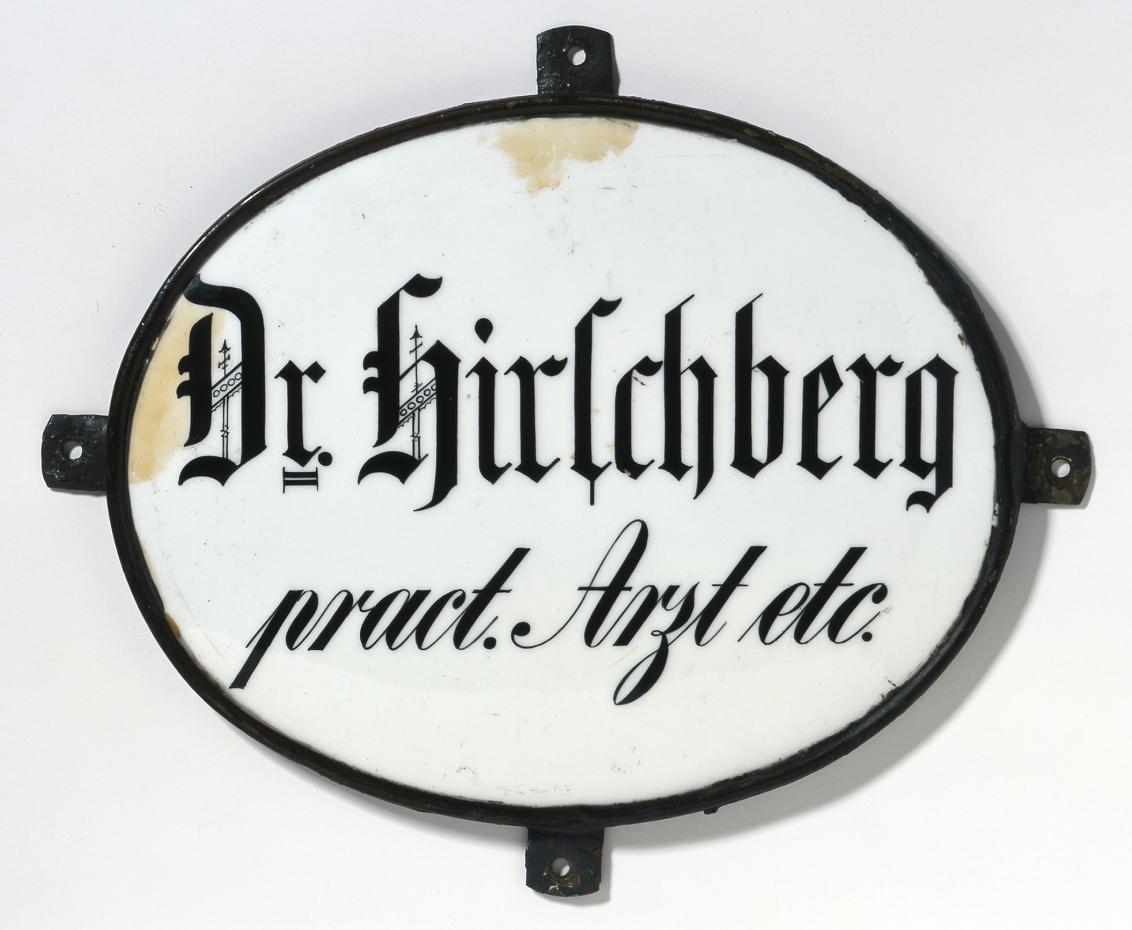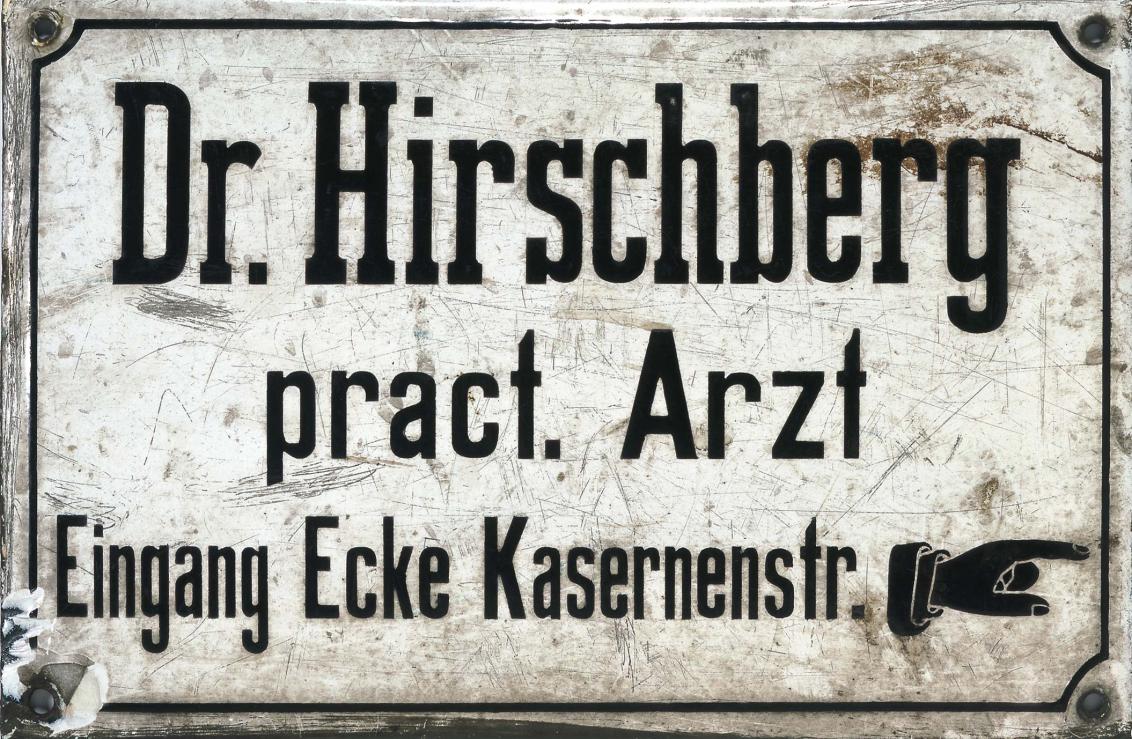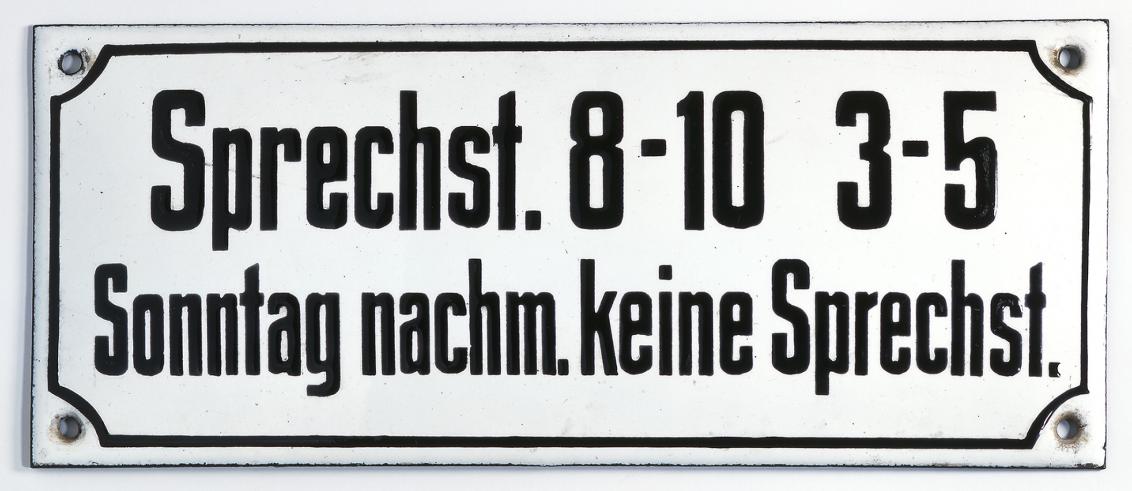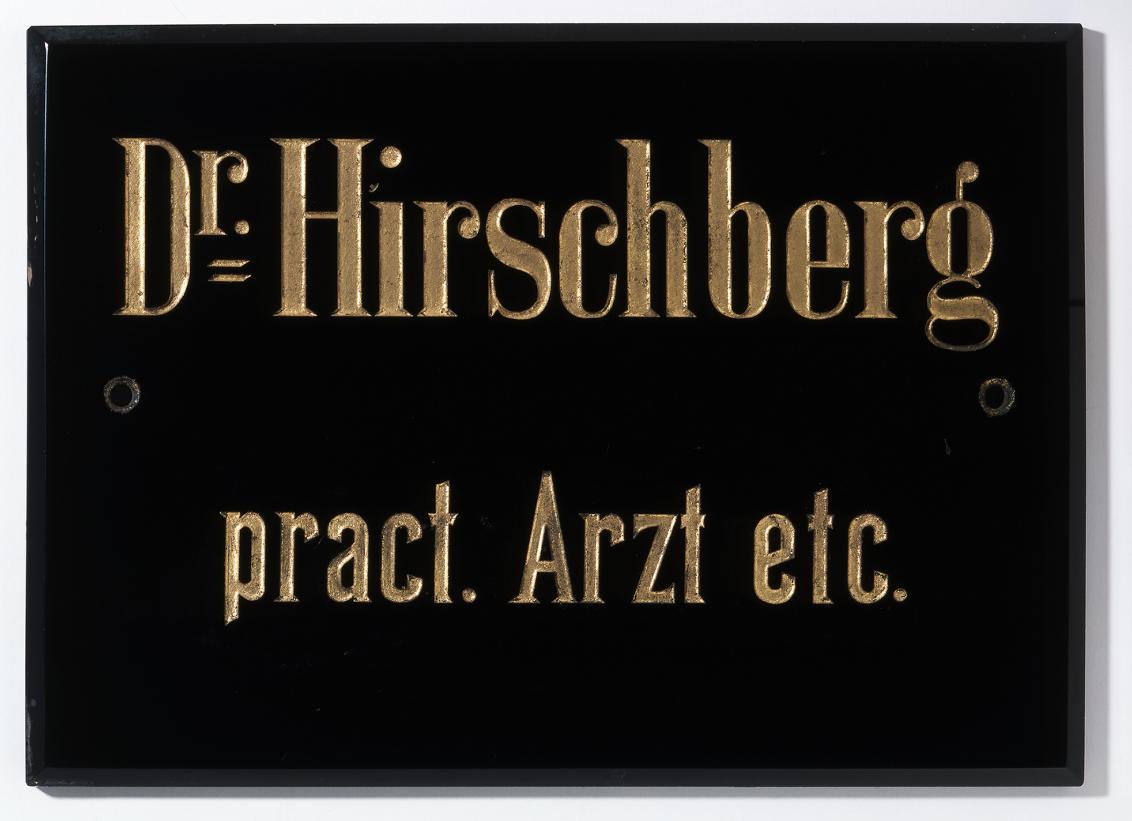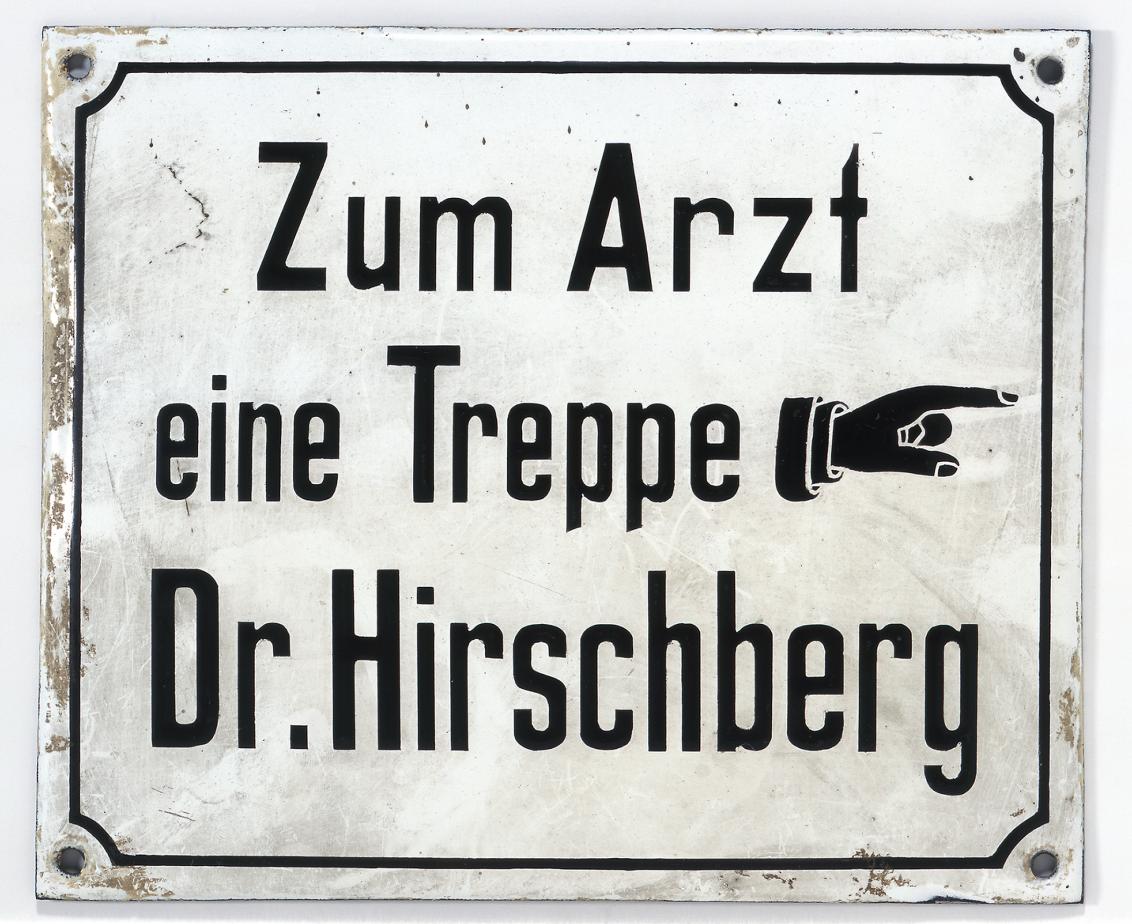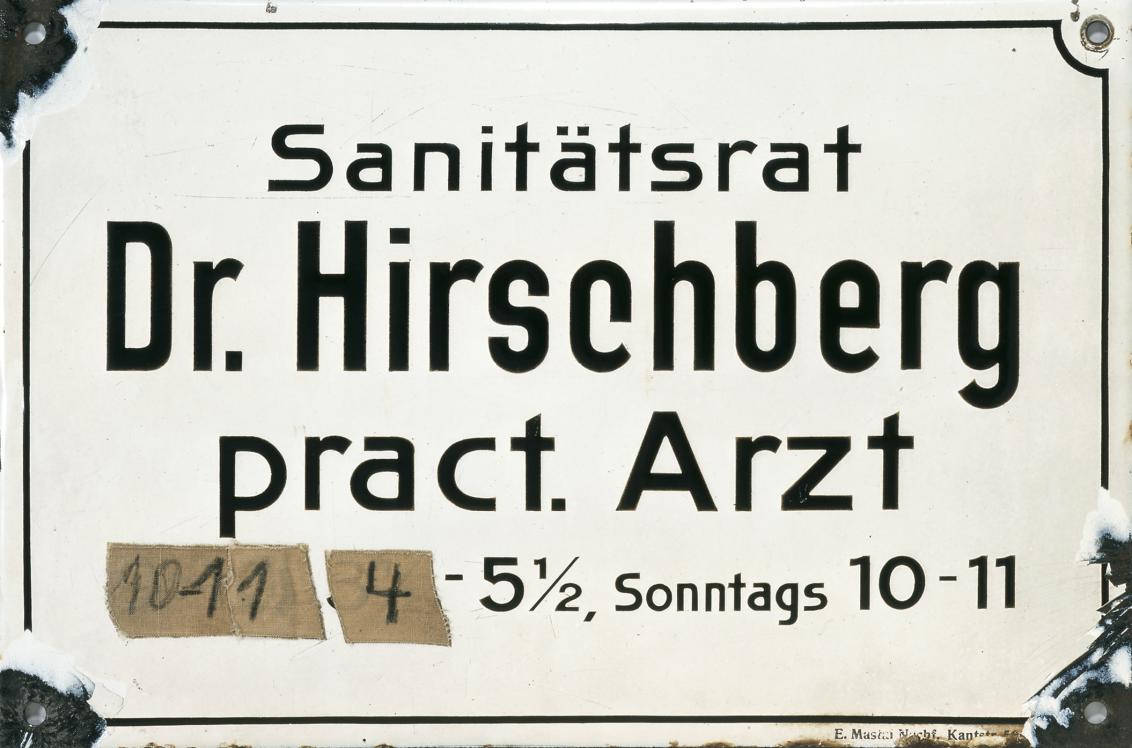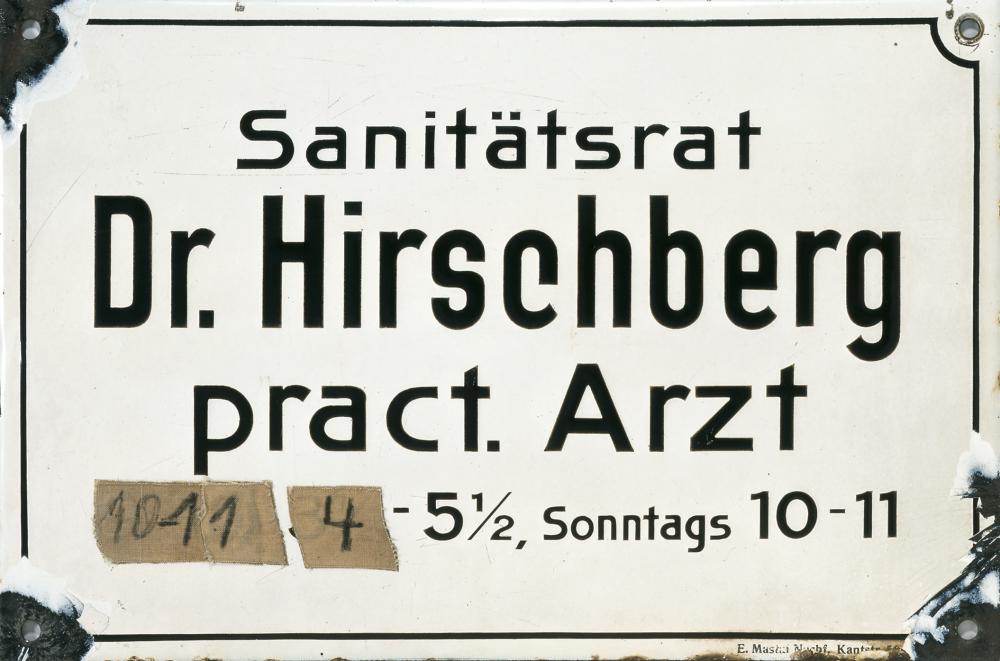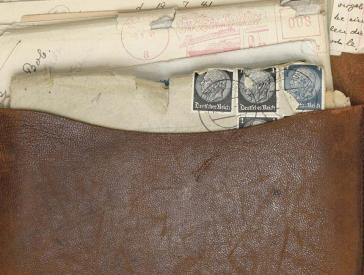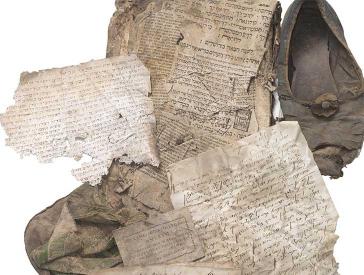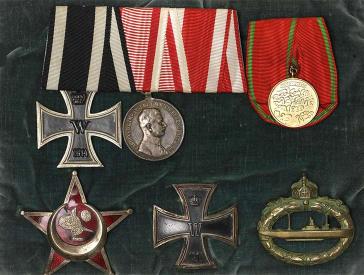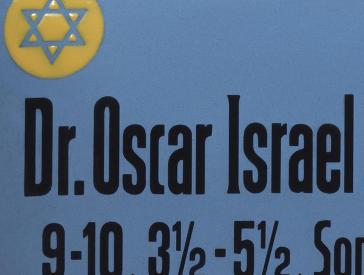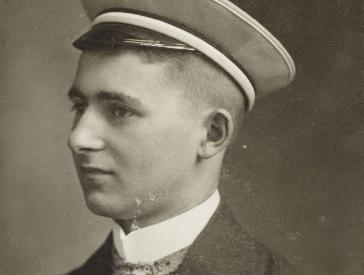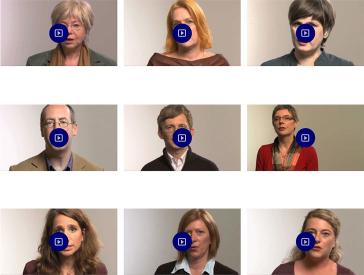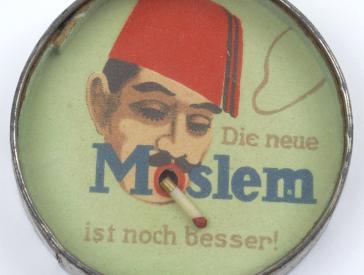Zeugnisse von Aufstieg und Ausgrenzung: Die Praxisschilder des Arztes Dr. Oscar Hirschberg
Blick ins Depot
In unserer Sammlung befinden sich insgesamt sieben Schilder, mit denen Oscar Hirschberg (1866–1946) auf seine Praxis als praktischer Arzt aufmerksam machte. Sie dokumentieren nicht nur seinen beruflichen Werdegang, sondern auch politische Veränderungen über 40 Jahre.
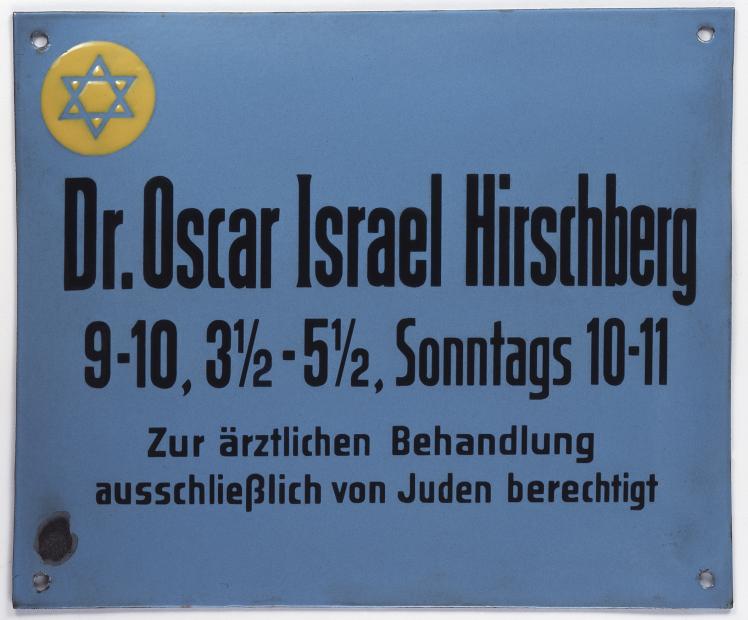
Praxisschild von Dr. Oscar Hirschberg, Berlin 1939–1945; Jüdisches Museum Berlin, Foto: Jens Ziehe
Dr. Oscar Hirschbergs Lebensweg
Nach dem Studium in Berlin war Oscar Hirschberg ab 1889 zunächst in Bromberg tätig, das damals zur preußischen Provinz Posen gehörte. 1920 wurde Bromberg, dann Bydgoszcz, polnisch – möglicherweise ein Grund, warum der Arzt ab 1921 seine Praxis in Berlin betrieb.
Antisemitische Vorschriften
Im Oktober 1938 erhielt Oscar Hirschberg mit einem Rundschreiben des Beauftragten für „Jüdische Behandler“ die Anweisung, wie sein Praxisschild zukünftig auszusehen habe. Es sei „ausschließlich in der Größe 30 mal 25 cm anzufertigen“, auf „himmelblauem Grund“ seien in schwarzer Schrift der Name und der Zusatz „Zur ärztlichen Behandlung ausschließlich von Juden berechtigt“ anzubringen. Die linke obere Ecke müsse eine „zitronengelbe runde Fläche“ – Durchmesser 5 cm – mit einem blauen Davidstern – Dreieckshöhe 3,5 cm – zeigen. „Zur Vermeidung späterer Unkosten“ wurde empfohlen, schon jetzt den Zusatznamen „Israel“ auf das Schild zu setzen.
Die Praxisschilder von Dr. Oscar Hirschberg
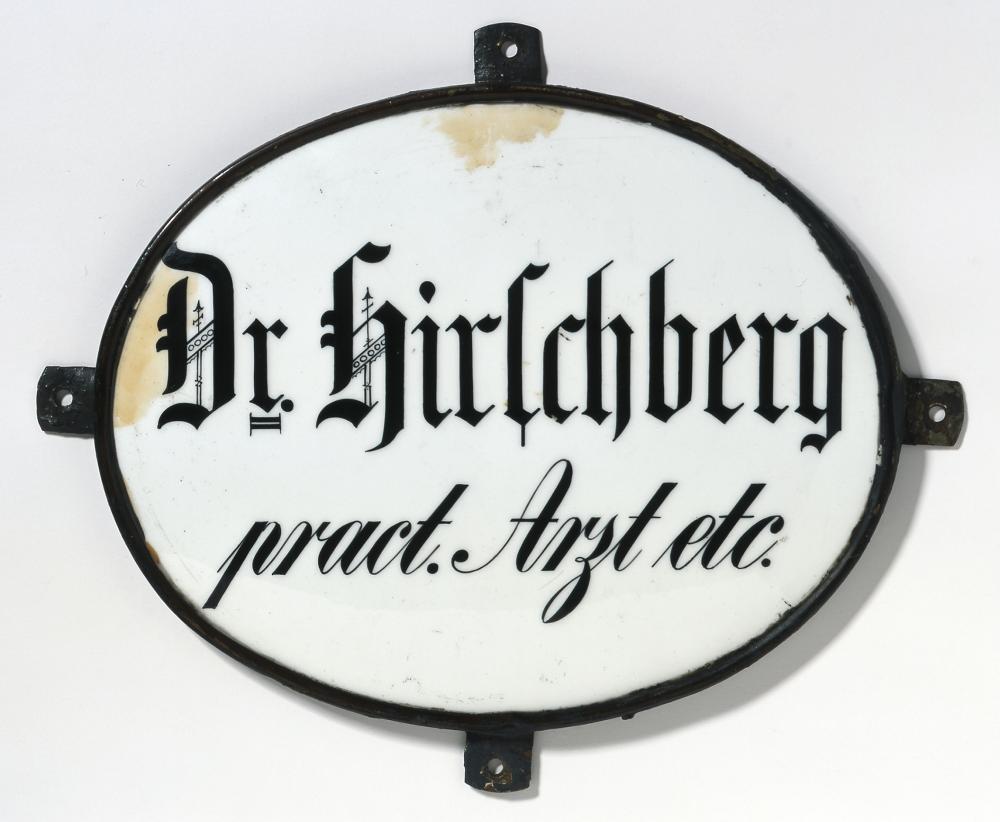
Praxisschild des Arztes Dr. Oscar Hirschberg, Bromberg ca. 1889 bis 1900, emalliertes Messing; Jüdisches Museum Berlin, Foto: Jens Ziehe
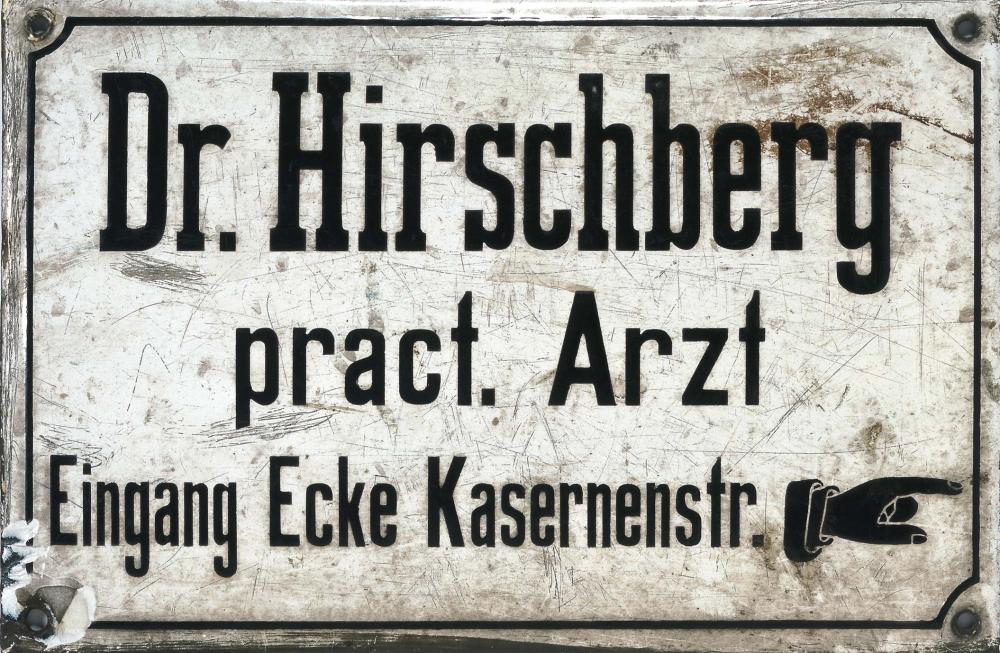
Praxisschild des Arztes Oscar Hirschberg, Bromberg 1902 bis 1910, emalliertes Blech. Das Schild stammt von Oscar Hirschbergs erster Praxis in Bromberg; Jüdisches Museum Berlin, Foto: Jens Ziehe.
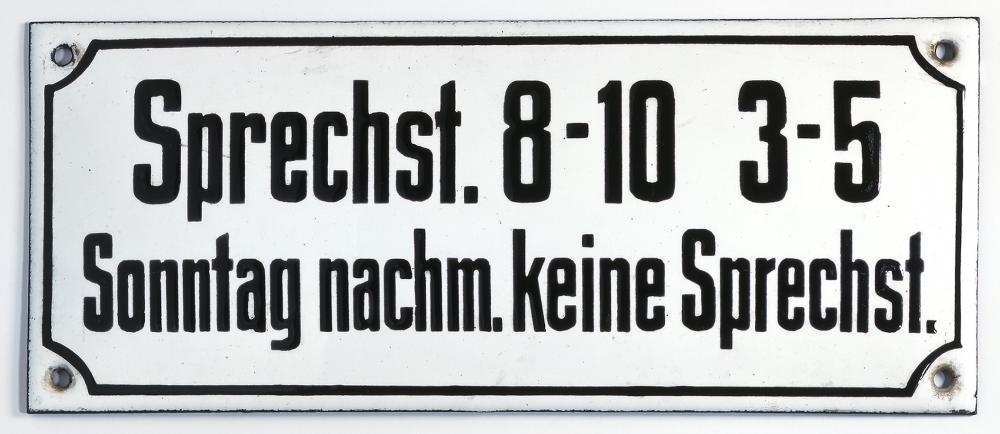
Praxisschild des Arztes Dr. Oscar Hirschberg, Bromberg 1910 bis 1920, emailliertes Blech; Jüdisches Museum Berlin, Foto: Jens Ziehe
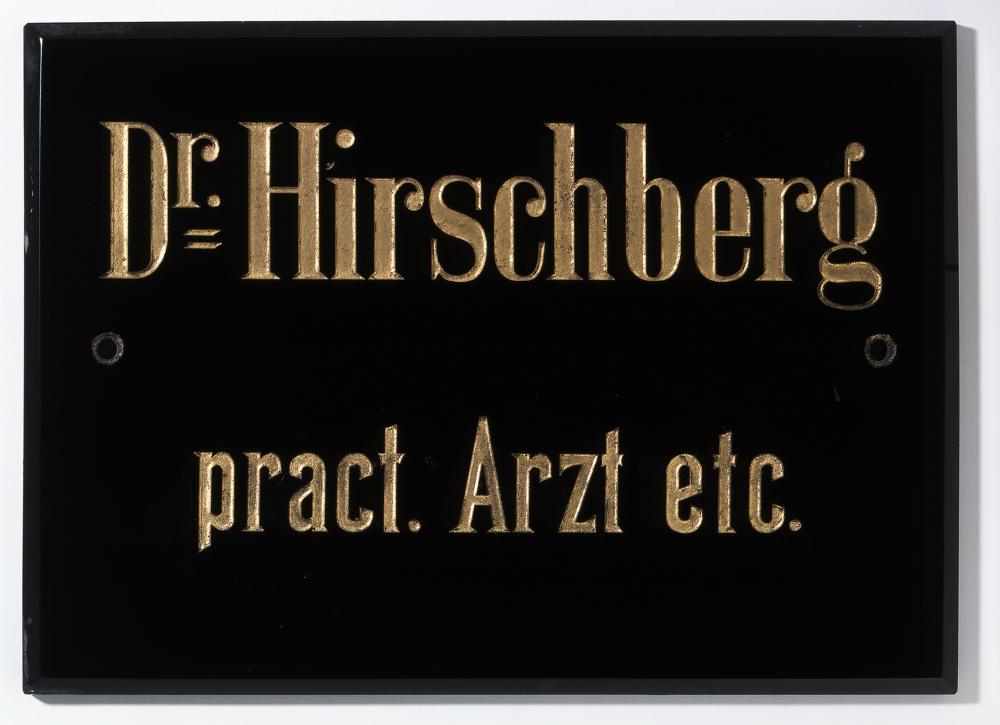
Praxisschild des Arztes Dr. Oscar Hirschberg, Bromberg oder Berlin ca. 1910 bis 1930, geschliffenes Glas und Schlagmetall; Jüdisches Museum Berlin, Foto: Jens Ziehe
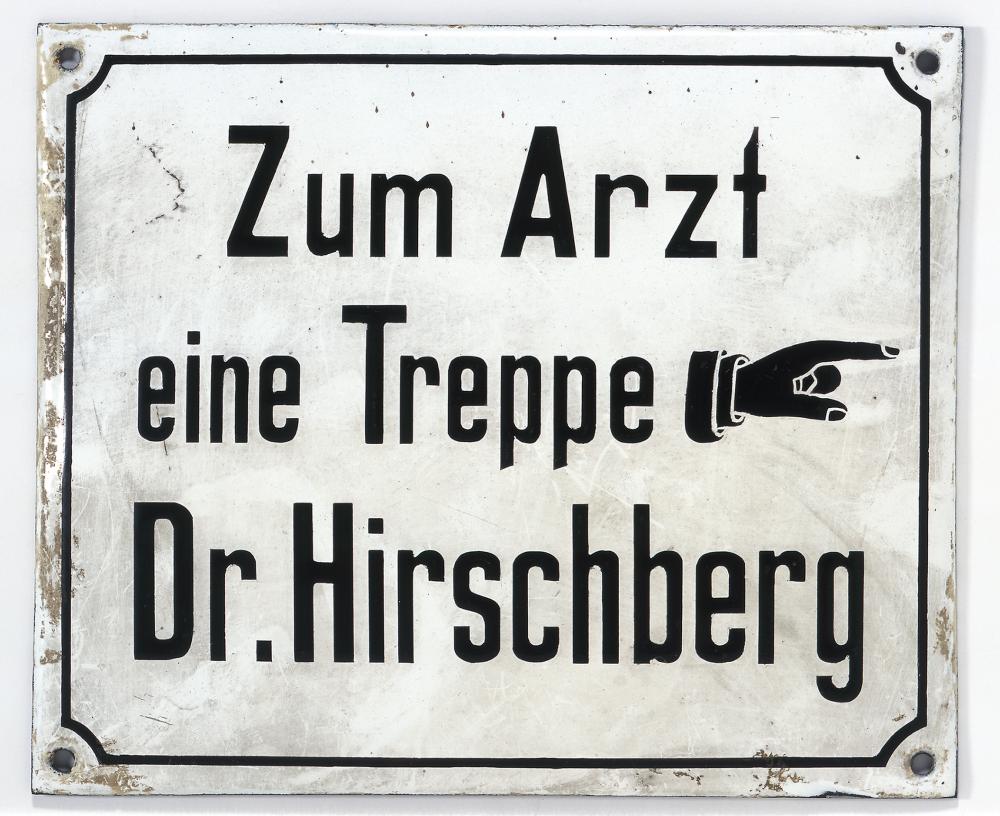
Praxisschild des Arztes Dr. Oscar Hirschberg, Berlin 1920 bis 1938, emailliertes Blech; Jüdisches Museum Berlin, Foto: Jens Ziehe
Berufsverbot für jüdische Ärzt*innen
Im Oktober 1938 erloschen die Approbationen der über 3.000 jüdischen Ärzt*innen, die noch im Deutschen Reich praktizierten. Aufgrund antijüdischer Boykotte, lokaler Initiativen der Berufsorganisationen und diskriminierender Verordnungen war es für sie seit 1933 zunehmend unmöglich geworden, vom Arztberuf zu leben. Lediglich 709 Ärzt*innen, die nach dem Reichsbürgergesetz als Jüd*innen galten, erhielten ab Herbst 1938 eine Sondergenehmigung. Diese erlaubte ausschließlich die Behandlung jüdischer Patient*innen, der eigenen Kinder sowie des*der Ehepartner*in und konnte jederzeit widerrufen werden. Es war zudem untersagt, sich Ärzt*in zu nennen; die Praxen mussten entsprechend gekennzeichnet werden. Ein Grund für die Erteilung der Sondergenehmigung konnte sein, dass der*die betroffene Ärzt*in in einer „Mischehe“ lebte. Auch Oscar Hirschberg überlebte die Schoa dank seiner nichtjüdischen Ehefrau. Bis zu seinem Tod im Jahr 1946 war er als Arzt in Berlin tätig.
| Titel | Praxisschild des Arztes Dr. Oscar Hirschberg |
|---|---|
| Sammlungsgebiet | Alltagskultur |
| Ort und Datierung | Berlin, 1938-1945 |
| Material | Blech, emailliert |
| Maße | 25x30x2 cm |
| Erwerb | Schenkung |
In unserem Archiv befinden sich auch Patientenunterlagen aus dem Nachlass von Dr. Oscar Hirschberg. Warum wir diese Unterlagen jedoch nicht öffentlich zugänglich machen, erklärt Dr. Manfred Wichmann, ehemaliger Mitarbeiter im Archiv, in unserer Reihe Was wir nicht zeigen.
Ausgewählte Objekte: Sammlung Alltagskultur (10)
